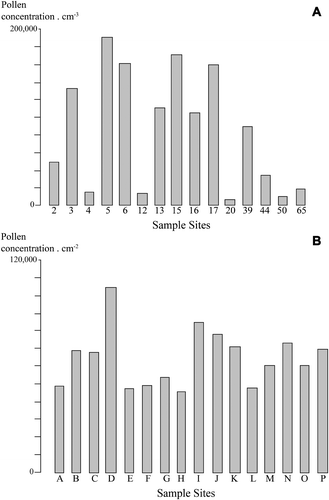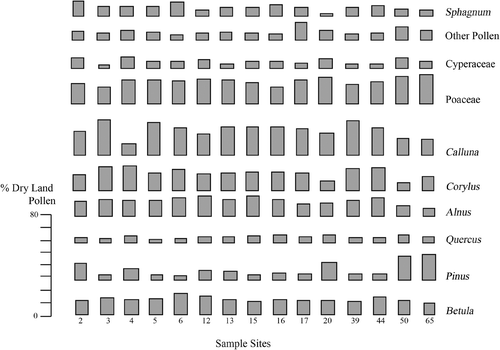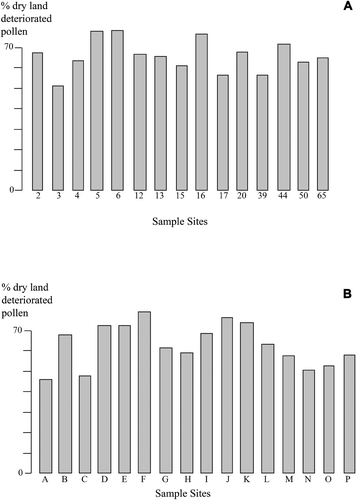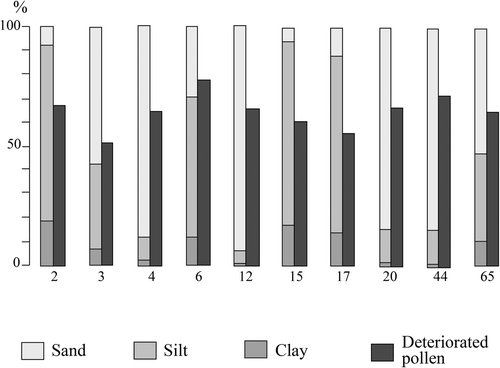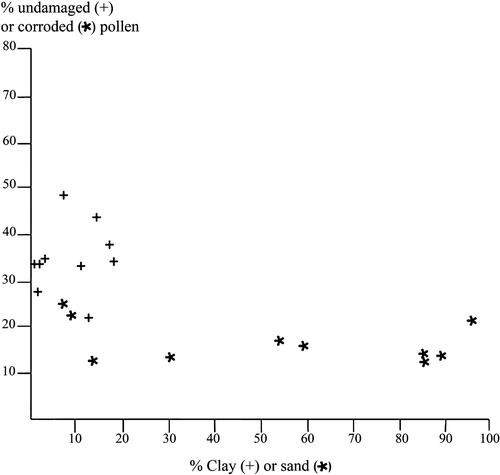Figures & data
Figure 1 Loch Sunart; distribution of major vegetation types and location of samples taken for pollen (moss polsters and loch sediments) and sediment analysis (loch sediments).
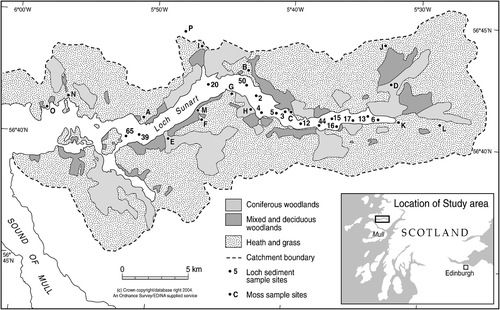
Table I. Counted dry land pollen totals used to derive the percentage values shown in the diagrams of the present study.
Figure 2 Relative pollen values of selected taxa from moss polsters. Values forSphagnum spores (which are not part of the dry land pollen sum) are expressed as % of total dry land pollen and as a consequence exceed 100% in samples from sites K, N and P. In order to retain the same scale throughout the diagram, the % Sphagnum values for these three sites have been shown as numbers.
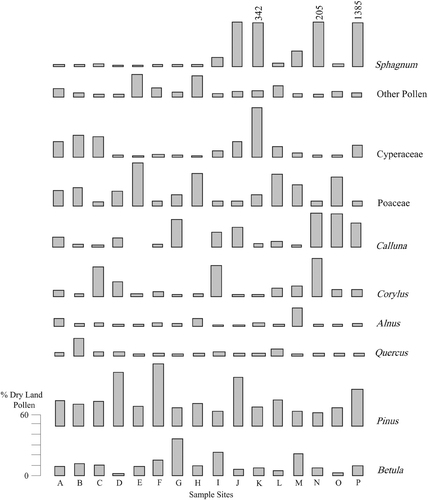
Figure 4 Result of Factor Analysis using twenty five variables(pollen taxa) and thirty one sites. (A) First and second factor score plot; filled circles = sea loch samples; open squares = moss polster sites. (B) First and second factor loading plot (pollen taxa). The software used in the analysis was MINITAB v14.
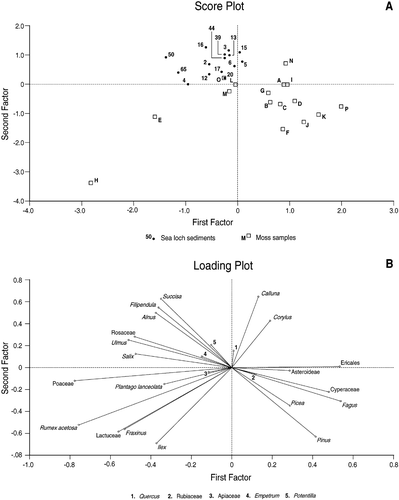
Figure 5 Total pollen concentrations from moss polster(B) and loch sediment sites (A). Note that the moss polster concentrations are based on standard surface area collected (cm2) whereas the loch sediment concentrations are based on a standard volume of material (cm3).
